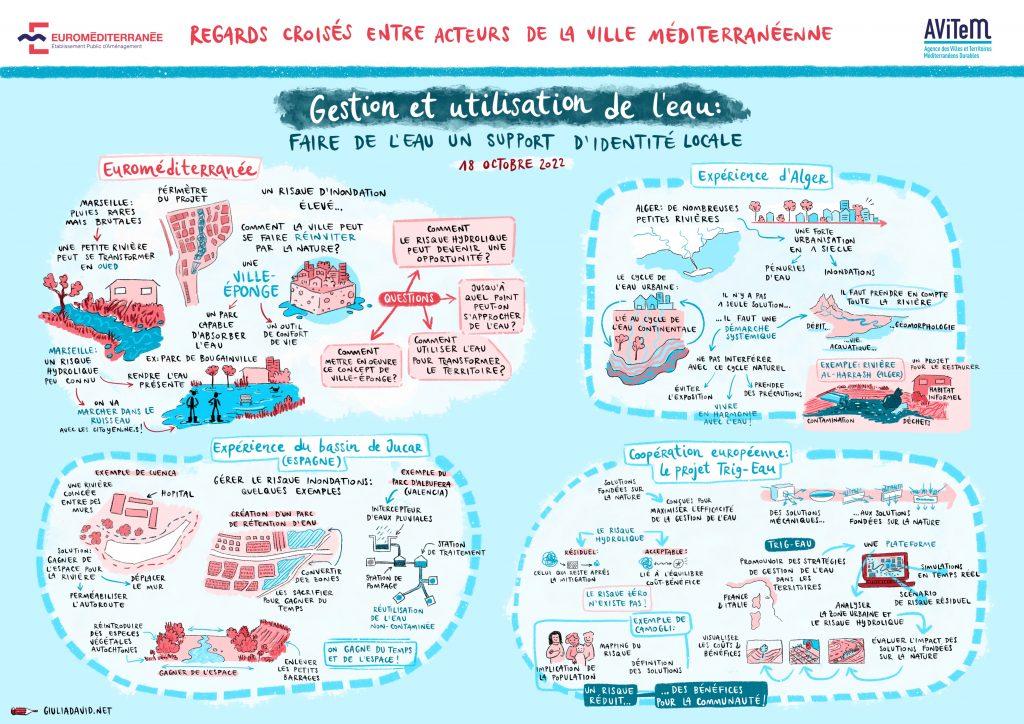Affected by changes in society (implications of the digital revolution, local dynamics, etc.), places are being transformed around new uses and are participating in the development of new organizations and behavior. For each project, the question of its capacity to respond to current and future challenges must therefore be asked. Beyond certifications, defining the sustainable development strategy of an urban development project means thinking about its societal meaning, the priority issues considered, the commitments and objectives set, the relevant innovations to achieve them and the indicators to be monitored to measure the reality of the impacts. This is the direction of the work that AVITEM has been undertaking for several years in conjunction with Euroméditerranée.
This is the direction of the work that AVITEM has been undertaking for several years in conjunction with Euroméditerranée. aims to promote the exchange of know-how, to accelerate the pooling of operations to share field experiences and to optimize financial arrangements. The final objective of this initiative is to give the territories and cities of the southern and northern shores the possibility of comparing their situations based on common data and, in the long term, to create an exportable “Sustainable Mediterranean City” label.
The final objective of this initiative is to give the territories and cities of the southern and northern shores the possibility of comparing their situations based on common data and, in the long term, to create an exportable “Sustainable Mediterranean City” label. Reading notes and articles on urban and climate news are regularly posted on the site.
The Network has also its own YouTube channel on which all the 2021 and 2022 webinars organized jointly by AVITEM and Euroméditerranée are published.

A sequence of webinars was organized in 2021 and 2022 to decipher and enhance the development guidelines while identifying which of the partners’ practices could be replicated and used in other areas. The themes chosen were voluntarily very varied and concerned the densification and compactness of urban forms, the use of natural elements (knowledge of the winds for better air conditioning, water management for optimized cooling and to prevent inappropriate flooding), the development of techniques integrating natural and bioclimatic contributions and solutions, and the adaptation and use of spaces that are often unused (roofs and terraces).
The themes chosen were voluntarily very varied and concerned the densification and compactness of urban forms, the use of natural elements (knowledge of the winds for better air conditioning, water management for optimized cooling and to prevent inappropriate flooding), the development of techniques integrating natural and bioclimatic contributions and solutions, and the adaptation and use of spaces that are often unused (roofs and terraces).
